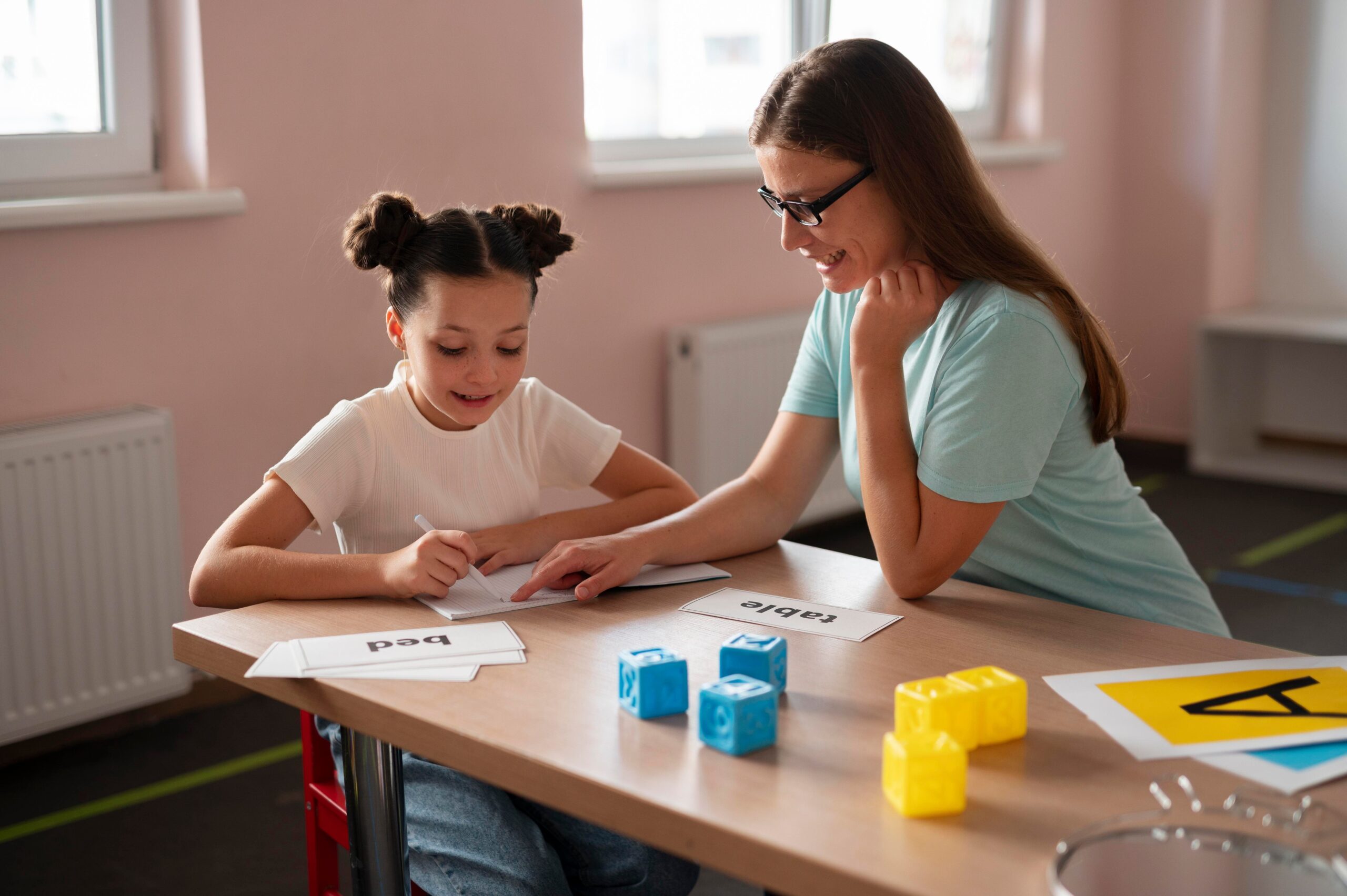Key Points:
- Children with autism may face specific challenges in expressing needs, understanding language, or picking up nonverbal cues.
- ABA therapy provides structured support to improve communication skills through individualized strategies.
- Addressing communication delays early on can significantly boost speech development and social interaction.
When your child struggles to express their needs, emotions, or thoughts, it can feel frustrating, isolating, and even overwhelming for both of you. Many parents of children with autism face daily challenges related to communication. Whether your child is nonverbal, has limited speech, or speaks but struggles with meaningful conversation, you’re not alone in this journey.
Understanding these communication barriers is the first step to finding the right support. Applied Behavior Analysis (ABA) therapy is one of the most evidence-based approaches to improving communication in children with autism. In this article, we’ll explore six common communication challenges seen in autism and how ABA can offer practical, structured solutions.
 1. Delayed Speech Development
1. Delayed Speech Development
Many children with autism experience speech delays, meaning they begin talking later than their peers or show slow progress in vocabulary growth. This can range from a few months to several years behind typical development.
Speech development isn’t just about saying words but about understanding how to use them in everyday situations. A child may echo words (echolalia) but not use them functionally.
How ABA Helps:
ABA therapists often use verbal behavior therapy (VBT), a technique within ABA, to encourage functional communication. Instead of teaching random words, VBT focuses on teaching the child to request items, label objects, and engage in conversation. For instance, a child may learn to say “juice” to get a drink, rather than just repeating it without context.
Additionally, reinforcement techniques are used to motivate speech. If a child says a word correctly or attempts to communicate, they receive a meaningful reward – something they value. This increases the chances they’ll use those words again.
2. Limited Use of Nonverbal Cues
Communication isn’t only verbal. Facial expressions, gestures, and body language are critical parts of how we interact. Children with autism often struggle to interpret or use nonverbal cues appropriately. They may not point to objects, wave goodbye, or understand another person’s tone or facial expression.
How ABA Helps:
ABA programs break down nonverbal behaviors into teachable steps. A therapist might teach a child how to point, nod, or make eye contact during specific situations. They can also help a child interpret what different facial expressions mean: happy, sad, or angry through picture cards, video modeling, or role-playing.
Practicing these skills in a controlled setting allows children to slowly generalize them into natural interactions. This is key to developing more successful social communication.
3. Difficulty Initiating or Maintaining Conversations
Even when a child can speak in full sentences, they may not know how to start or keep a conversation going. They might not ask questions, take turns talking, or stay on topic. For example, a child might repeatedly talk about their favorite toy without noticing whether the listener is interested.
How ABA Helps:
One common ABA technique is script training, where children are taught to use scripted phrases to initiate conversations, such as “Hi, what’s your name?” Over time, these scripts fade, and the child learns to generalize conversation skills across different people and settings.
Therapists also work on turn-taking, active listening, and staying on topic, often through structured play or social stories. These are tailored to the child’s level and gradually build toward natural conversation skills.
4. Difficulty Understanding Abstract or Figurative Language
Many children with autism take language literally. Phrases like “break a leg” or “it’s raining cats and dogs” can be confusing or frustrating. This challenge can cause misunderstandings and make social interactions more difficult.
How ABA Helps:
ABA therapy incorporates language support through teaching literal and abstract meanings side by side. For example, therapists may use visual aids to explain idioms or metaphors. Over time, the child begins to understand when phrases are meant figuratively, improving their ability to follow conversations and participate in classroom discussions.
In addition, ABA programs often include comprehension exercises that build up from simple to more complex language concepts.
 5. Lack of Functional Communication
5. Lack of Functional Communication
Some children with autism may not speak at all or may use behavior (crying, hitting, walking away) to express wants and needs. This is known as a lack of functional communication, when a child doesn’t have a consistent or appropriate way to communicate.
How ABA Helps:
ABA introduces alternative communication systems such as PECS (Picture Exchange Communication System), sign language, or AAC (Augmentative and Alternative Communication) devices. These tools help nonverbal children express themselves in ways that are understandable to others.
Therapists systematically teach how and when to use these systems so that the child gains independence in daily routines, whether it’s asking for a snack, requesting a break, or greeting someone.
The ultimate goal is to reduce frustration-driven behaviors and replace them with reliable communication methods.
6. Challenges with Listening and Comprehension
Some children with autism may appear to “tune out” or not respond to spoken language. In many cases, they have difficulty processing spoken instructions or questions. This isn’t a lack of intelligence. It’s often a breakdown in language comprehension.
How ABA Helps:
ABA programs are designed to simplify and structure language input, making it easier for the child to process. Therapists may use visual supports, repetition, and simplified instructions to build understanding.
For example, rather than saying, “Can you please go to the kitchen, open the fridge, and get your water bottle?” the therapist might start with a simple “Get your water.” Once comprehension improves, complexity is gradually added.
This structured approach reduces anxiety around communication and increases a child’s confidence in responding.
Navigating Autism Through Communication Support
Communication challenges in autism can look vastly different from child to child. Some may struggle with verbal language, others with understanding cues or engaging socially. What they all share, however, is the need for consistent, individualized support.
ABA therapy excels in targeting these communication delays by breaking down skills, using data to track progress, and building motivation. It’s not about pushing a child to speak but about helping them connect, be understood, and understand others.
No two children are the same, and ABA’s structured yet flexible approach makes it one of the most widely used methods for addressing autism communication needs.
If you’re looking for expert ABA therapy services in Colorado, Iowa, or Nebraska, Spirit ABA is here to help your child develop meaningful communication skills, whether verbal, nonverbal, or both.
Our therapists at Spirit ABA work closely with families to create customized programs that address your child’s unique strengths and challenges. We focus on improving not just speech, but the full spectrum of social and language development, using data-backed strategies in real-world environments.
Reach out to us today and discover how personalized therapy can make a lasting difference in your child’s life.


